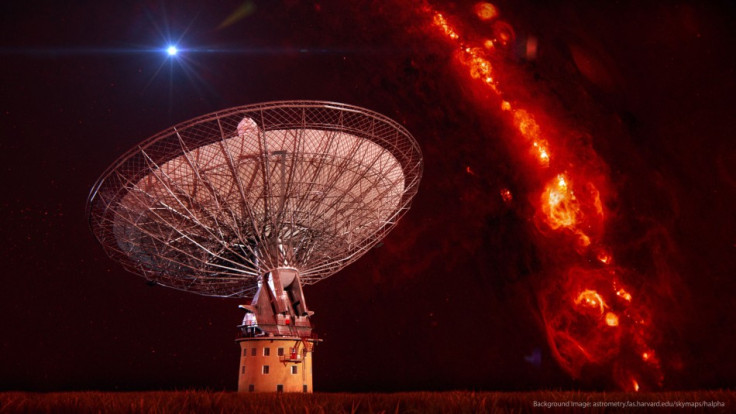Mystery Cosmic Radio Bursts Tracked to 'Catastrophic Events' 7 Billion Years Ago [VIDEO]

Scientists believe they have traced the origins of four mysterious cosmic radio bursts to a time when the universe was half its current age - around seven billion years ago.
An international research team said the radio bursts lasted for just a few milliseconds, but that their brightness and distance suggest they came from billions of light years away following a "catastrophic event".
Writing in the journal Science, the research team say the energy of the bursts suggest they came from an extreme astrophysical event involving black holes or neutron stars, which form after a massive star expands and collapses in a supernova event.
Dan Thornton, from the University of Manchester and Australia's Commonwealth Scientific and Industrial Research Organisation, said: "A single burst of radio emission of unknown origin was detected outside our galaxy about six years ago but no one was certain what it was or even if it was real, so we have spent the last four years searching for more of these explosive, short-duration radio bursts.
"This paper describes four more bursts, removing any doubt that they are real. The radio bursts last for just a few milliseconds and the furthest one that we detected was several billion light years away."
In 2007, astronomers detected the radio bursts and estimated they came from around three billion light years away. At the time, Matthew Bailes, from Swinburne University in Australia, said: "This burst represents an entirely new astronomical phenomenon."
Maura McLaughlin, from West Virginia University, added: "We think it has got to be some sort of catastrophic event happening in another galaxy - like two stars colliding and merging or maybe a black hole. Something kind of exotic."
The researchers say they now believe there is a radio burst of similar magnitude taking place in the universe every 10 seconds, but capturing them means pointing a telescope to the right point in the sky at the right time.
Understanding universe matter
Michael Kramer, Max-Planck Institute director, said: "The bursts last only a tenth of the blink of an eye. With current telescopes we need to be lucky to look at the right spot at the right time. But if we could view the sky with 'radio eyes' there would be flashes going off all over the sky every day."
Explaining a theory on the radio burst causes, study co-author Matthew Bailes said they are likely the result of neutron stars, also known as magnetars.
He said: "Magnetars can give off more energy in a millisecond than our Sun does in 300,000 years and are a leading candidate for the burst."
The team believes their research into these bursts will provide a means of finding out the properties of the space between Earth and where the radio emissions took place, and are planning to look for more bursts using telescopes in Australia and the UK.
Ben Stappers, from Manchester's School of Physics and Astronomy, said: "We are still not sure about what makes up the space between galaxies, so we will be able to use these radio bursts like probes in order to understand more about some of the missing matter in the universe."
© Copyright IBTimes 2024. All rights reserved.






